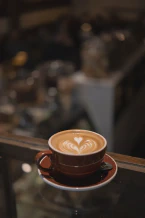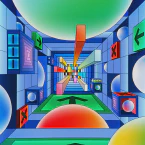Boosting Creative Inspiration

Finding Inspiration: How to Spark Creative Ideas and Boost Motivation
Do you find yourself struggling to come up with creative ideas or lacking motivation to pursue your goals? You’re not alone. Even the most successful and creative individuals experience periods of low motivation and inspiration. But what if there was a way to spark inspiration and boost your creativity?
According to research, inspiration is a key motivator that can feed creativity and lead to great ideas. However, inspiration is not just a passive experience of being inspired by something, but an active process of being inspired to do something. This means that you need both the spark of inspiration and the effort to turn that inspiration into action.
To understand how to spark creativity, it’s important to know where inspiration comes from in our brains. Studies have shown that creative thinking involves the interplay of different brain networks, including the Executive Attention Network and the Default Mode Network. These networks work together in generating and selecting ideas, giving you that “aha” moment.
But how can you increase your chances of having these “aha” moments? One way is to disengage your brain from focused tasks and allow your mind to wander. This can happen during idle time, such as walking, taking a shower, or even drifting off to sleep.
In fact, inventor Thomas Edison reportedly used the moment between wakefulness and sleep to spark his creative ideas. By dropping metal balls in a tray as he drifted off to sleep, he would wake up with a burst of inspiration and write down his ideas before he forgot them.
While not everyone may be able to replicate Edison’s technique, there are other ways to find inspiration in everyday life. Reading fiction, listening to music, or simply taking a break from technology can all help to disengage your brain and spark creativity.
In conclusion, finding inspiration and sparking creativity is a crucial aspect of the creative process. By understanding how inspiration works in our brains and actively seeking out moments of disengagement, we can increase our chances of having great ideas and turning them into reality.
The Science of Inspiration: Understanding the Brain’s Creative Process
Have you ever wondered where inspiration comes from in our brains? Researchers have been studying the creative process and have identified two distinct processes that make up the experience of inspiration: the passive process of being inspired by something and the active process of being inspired to do something.
The first process, being inspired by something, is like a spark of inspiration. This is the moment when you have an “aha” moment or idea. The second process, being inspired to do something, involves the effort to turn that inspiration into action. This means that both the spark of inspiration and the effort to turn it into action are equally important in the creative process.
Studies have shown that creative thinking involves the interplay of different brain networks. The Executive Attention Network, a group of brain regions that help us focus on the here and now and pay attention, is involved in selecting ideas. On the other hand, the Default Mode Network, a group of different brain regions that are activated when our minds are wandering or disengaged, is involved in generating ideas.
These two networks work together in the creative process to give us that “aha” moment. The Default Mode Network generates ideas, while the Executive Attention Network selects ideas to turn into action. By understanding the interplay of these two networks, we can increase our chances of having great ideas and turning them into reality.
Interestingly, moments of disengagement, such as walking or taking a shower, can actually increase our chances of having these “aha” moments. When our brains are disengaged from focused tasks, we are more likely to have spontaneous thoughts and ideas. This is because during idle time, much of our brain continues to work, allowing us to visualize the past and imagine the future.
In conclusion, understanding the science of inspiration and the interplay of different brain networks is crucial to sparking creativity and turning great ideas into action. By actively seeking out moments of disengagement and allowing our minds to wander, we can increase our chances of having those “aha” moments that lead to creative insights and greatness.
Edison’s Secret Trick: Can Drifting Off to Sleep Lead to Insight and Creativity?
Thomas Edison, one of the greatest inventors of all time, reportedly used a unique technique to spark his creative ideas. By dropping metal balls in a tray as he drifted off to sleep, he would wake up with a burst of inspiration and write down his ideas before he forgot them.
But is there any science behind Edison’s secret trick? A recent study suggests that there might be. Researchers investigated whether the first stage of sleep, known as stage 1, offers the right conditions for insight and creativity.
Participants were given a task to identify a hidden pattern, and then seated in a reclining chair holding a metal drink bottle. If they drifted off to sleep and the bottle fell, they were asked to report what they were thinking just before they let go.
The researchers found that those who drifted off into stage 1 sleep for at least 15 seconds were three times as likely to identify the hidden pattern compared to those who remained awake. This suggests that the interplay of brain networks during the first stage of sleep can lead to insight and creativity.
While not everyone may be able to replicate Edison’s technique of dropping metal balls, there are other ways to take advantage of the creative potential of drifting off to sleep. For example, you can try to focus on a particular problem or idea before going to bed and see if any solutions or insights come to you during the night.
In conclusion, Edison’s secret trick might not be so secret after all. The science behind the first stage of sleep suggests that it can be a fertile ground for insight and creativity. By taking advantage of this natural process and allowing our minds to wander during moments of disengagement, we can increase our chances of having those “aha” moments that lead to great ideas and accomplishments.
The Interplay of Brain Networks: How to Disengage and Find Inspiration
As we have seen, moments of disengagement and allowing our minds to wander can be crucial for sparking creativity and finding inspiration. But how can we actively seek out these moments in our daily lives?
One way is to use the Executive Attention Network, a group of brain regions that helps us focus on the here and now and pay attention. By using this network, we are able to relate to our current surroundings and tasks. But then, at the moment our brain becomes disengaged, like when our mind wanders, we activate a group of different brain regions called the Default Mode Network. This is when our brain is at rest and we are not focused on one task.
During idle time, much of our brain continues to work. We visualize the past and imagine the future, allowing for spontaneous thoughts and ideas. This is why moments of disengagement, such as taking a walk, listening to music, or even using smart home devices to free up our time from housework, can be so valuable for generating new ideas and problem-solving.
By understanding the interplay of these brain networks and actively seeking out moments of disengagement, we can increase our chances of having those “aha” moments and turning great ideas into action.
In conclusion, by utilizing the Executive Attention Network to focus on tasks and the Default Mode Network to disengage and allow our minds to wander, we can find inspiration and spark creativity. Whether it’s taking a walk, listening to music, or simply taking a break from focused tasks, moments of disengagement are crucial for generating new ideas and finding solutions to problems.
Greatness Takes Effort: Why Inspiration and Perspiration Work Together
We often hear the saying that “genius is 1% inspiration and 99% perspiration,” and there is certainly some truth to this. While inspiration and creativity are crucial for generating great ideas, it is the effort and persistence we put into realizing those ideas that ultimately lead to greatness.
As we learned earlier, the creative process involves both the spark of inspiration and the effort to turn that inspiration into action. Creativity is the combination of ideas and action, and greatness comes from the effort we put into realizing those ideas.
This is not to say that inspiration is not important. In fact, being inspired more often can lead to more creative insights and an increase in passions. But without the effort and persistence to turn those inspirations into reality, they remain just ideas.
So rather than focusing solely on tools to optimize our productivity or creativity, we should also focus on finding inspiration and ways to disengage in our everyday lives. By taking the time to allow our minds to wander and find inspiration, and then putting in the effort and persistence to turn those inspirations into action, we can achieve greatness and bring our ideas to life.
In conclusion, inspiration and perspiration work together in the creative process to bring about greatness. While being inspired is important for generating great ideas, it is the effort and persistence we put into realizing those ideas that ultimately leads to success. By finding inspiration and disengaging our minds, we can increase our chances of having those “aha” moments, and by putting in the effort, we can turn those moments into reality.
From Fiction to Music: Finding Inspiration in Everyday Life
Inspiration can come from anywhere and everywhere in our daily lives. It can come from reading a book, listening to music, or even taking a walk. The key is to find what inspires you and use it to spark your creativity.
Reading fiction can be a great way to find inspiration. Fiction allows us to escape into different worlds and experience different perspectives. It can spark our imaginations and help us to see things in a new light. Reading about characters who overcome challenges and achieve greatness can also inspire us to do the same.
Music is another powerful source of inspiration. It can evoke emotions and transport us to different times and places. Listening to music that we love can help us to relax and clear our minds, which can lead to new ideas and insights. Playing music or singing can also be a great way to tap into our creativity and express ourselves.
Taking a walk or engaging in other physical activities can also be a great way to find inspiration. Exercise has been shown to improve cognitive function and creativity. It can also help us to clear our minds and focus on the present moment, which can lead to new insights and ideas.
The key to finding inspiration in everyday life is to be open to new experiences and to find what works for you. Experiment with different activities and see what inspires you the most. Whether it’s reading, listening to music, or taking a walk, finding inspiration in everyday life can help to spark your creativity and lead to new ideas and insights.
Smart Home Devices and Technology: Tools for Finding Your Inspiration
Technology can be a powerful tool for finding inspiration in our daily lives. Smart home devices can help us to free up time and energy, which we can then use to pursue our creative passions.
For example, using a smart home device like a robot vacuum can free up time that would have been spent cleaning, which can then be used to engage in creative activities. Smart home devices can also help us to stay organized and manage our time more efficiently, which can lead to greater productivity and creativity.
Technology can also be a source of inspiration in and of itself. Social media platforms like Instagram and Pinterest can expose us to new ideas and perspectives, while websites and blogs can provide valuable information and resources on a wide range of topics.
In addition, technology can help us to connect with others who share our interests and passions. Online communities and forums can provide opportunities to collaborate, share ideas, and receive feedback on our work.
The key to using technology as a tool for finding inspiration is to use it mindfully and intentionally. Rather than mindlessly scrolling through social media feeds or watching endless hours of TV, we can use technology to seek out information and resources that inspire us.
By using technology to our advantage, we can free up time and energy to pursue our creative passions and find new sources of inspiration in our daily lives. Smart home devices and technology can be valuable tools for finding inspiration and unlocking our creativity.
Share Your Inspiration: What Inspires Your Creativity and Greatness in Daily Life?
Inspiration can come from many different sources, and what inspires one person may not inspire another. That’s why it’s important to share our own experiences and perspectives on finding inspiration and creativity.
So, what inspires you? Is it the beauty of nature, the creativity of others, or the challenges of everyday life? Do you find inspiration in music, art, literature, or technology?
Sharing your own sources of inspiration can help others to discover new ideas and perspectives. It can also create a sense of community and connection, as we recognize that we all have the potential to be creative and to pursue our passions.
Some examples of inspiration shared in the video include reading fiction, walking, and listening to music. Others may find inspiration in spending time with loved ones, pursuing hobbies and interests, or simply taking time to reflect and recharge.
Whatever inspires you, don’t be afraid to share it with others. By doing so, you may help to spark creativity and inspiration in those around you, and together we can all work towards achieving our goals and dreams.
Conclusion
Inspiration is a powerful force that can spark creativity and drive us towards achieving greatness in our lives. It can come from many different sources, and can be found in both the mundane and the extraordinary.
Through exploring the science of inspiration and understanding the interplay of brain networks, we can better understand how to spark creativity and find inspiration in our everyday lives. Whether it’s through disengaging our brains, exploring new experiences, or using technology to our advantage, there are countless ways to tap into our creative potential and pursue our passions.
But inspiration alone is not enough. As the saying goes, “inspiration is 1% inspiration and 99% perspiration”. Greatness takes effort, and it is only through combining inspiration with action and effort that we can bring our ideas to fruition.
By sharing our own sources of inspiration and creativity, we can create a sense of community and connection, and help to spark new ideas and perspectives in others. In this way, we can all work together to achieve our goals and dreams, and to make a positive impact on the world around us.
So, whether you find inspiration in the beauty of nature, the creativity of others, or the challenges of everyday life, don’t be afraid to share your experiences and perspectives with others. Together, we can all find the inspiration and creativity we need to pursue our passions and achieve greatness.
















